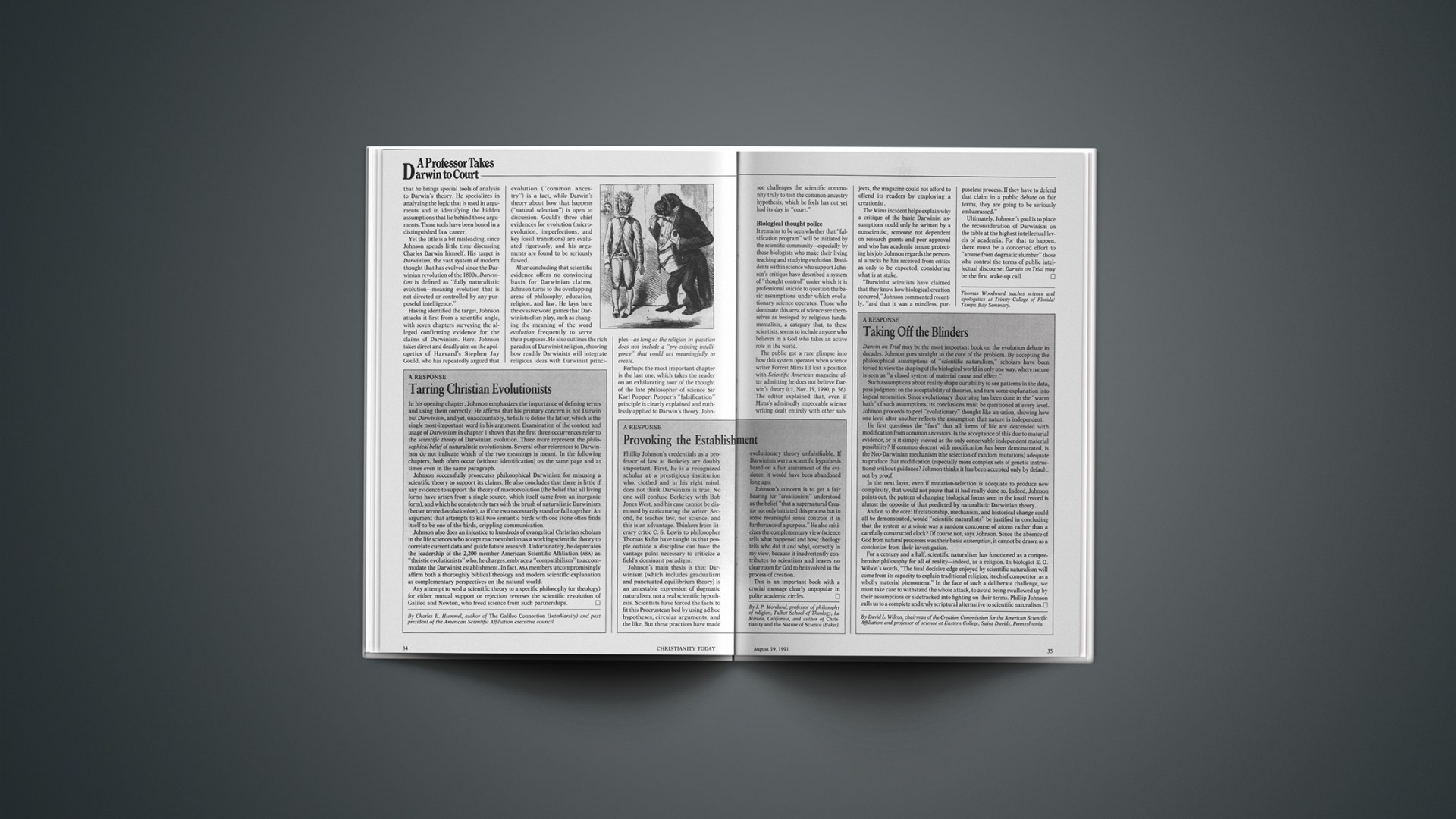In his opening chapter, Johnson emphasizes the importance of defining terms and using them correctly. He affirms that his primary concern is not Darwin but Darwinism, and yet, unaccountably, he fails to define the latter, which is the single most-important word in his argument. Examination of the context and usage of Darwinism in chapter 1 shows that the first three occurrences refer to the scientific theory of Darwinian evolution. Three more represent the philosophical belief of naturalistic evolutionism. Several other references to Darwinism do not indicate which of the two meanings is meant. In the following chapters, both often occur (without identification) on the same page and at times even in the same paragraph.
Johnson successfully prosecutes philosophical Darwinism for misusing a scientific theory to support its claims. He also concludes that there is little if any evidence to support the theory of macroevolution (the belief that all living forms have arisen from a single source, which itself came from an inorganic form), and which he consistently tars with the brush of naturalistic Darwinism (better termed evolutionism), as if the two necessarily stand or fall together. An argument that attempts to kill two semantic birds with one stone often finds itself to be one of the birds, crippling communication.
Johnson also does an injustice to hundreds of evangelical Christian scholars in the life sciences who accept macroevolution as a working scientific theory to correlate current data and guide future research. Unfortunately, he deprecates the leadership of the 2,200-member American Scientific Affiliation (ASA) as “theistic evolutionists” who, he charges, embrace a “compatibilism” to accommodate the Darwinist establishment. In fact, ASA members uncompromisingly affirm both a thoroughly biblical theology and modern scientific explanation as complementary perspectives on the natural world.
Any attempt to wed a scientific theory to a specific philosophy (or theology) for either mutual support or rejection reverses the scientific revolution of Galileo and Newton, who freed science from such partnerships.
By Charles E. Hummel, author of The Galileo Connection (InterVarsity) and past president of the American Scientific Affiliation executive council.










